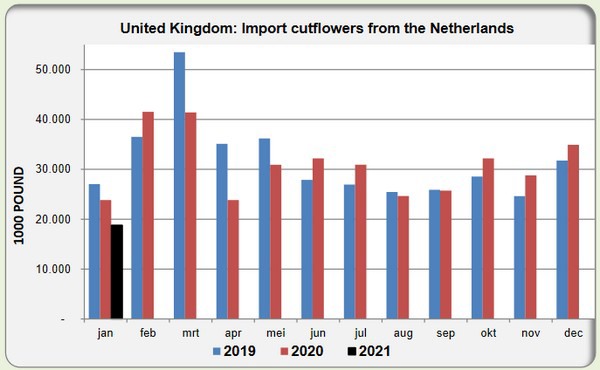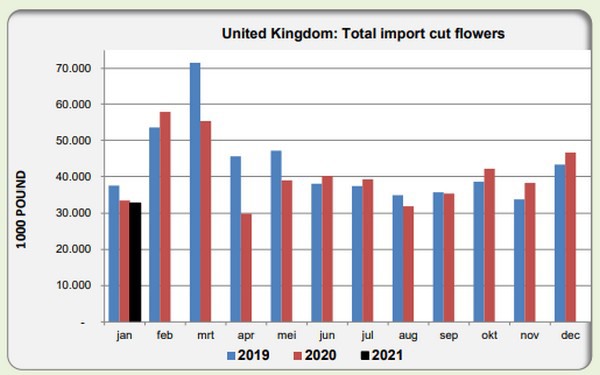Right after Brexit came into effect, on January 1, 2021, the cut flower trade flow changed. In January 2021, the UK imported less cut flowers from the Netherlands, compared to the January months in previous years. In British pounds, imports were down by 20% compared to January 2020. The import of cut flowers from Colombia and Kenya, however, increased sharply; the import out of Kenya even doubled (+109%). Still, the Netherlands, remains the major supplier of cut flower for the UK.

Share Dutch flowers decreased from 75 to 55%
Without exception, the share of the Netherlands has been around 75% every month in recent years. In January this year, it dropped to below 60%. Kenya's share in January was 25%, whereas before Kenya's share has always been just over 10%. Colombia's share in January was 14%, double that of the previous year.
Lower imports in January 2021
Usually, January is the month in which imports are the smallest. February and March are usually the most important months for the import of cut flowers in the UK. This year, however, the total imports in January 2021 of cut flowers were a bit lower (about 2 percent) compared to January last year.

Many imports of roses, particularly from Kenya
The import of roses increased sharply, +51% compared to Janyrat 2020, and even became the most important product in the total import range, surpassing the category other/bouquets. Within the Dutch range, roses and lilies did very well, increasing in value by 1% and 16% respectively. The cut flower imports from Kenya consist almost exclusively of roses. Also noteworthy is the strong growth of imports of roses from Colombia. The group other/bouquets did not so well and decreased by 30%. Other important products that are imported during that time of the year are chrysanthemums, lilies, dried flowers, carnations, orchids, ranunculi, and gladiolus. In the majority of the groups, a decrease can be noticed, with orchids and gladiolus showing the sharpest drop (orchids: -78%, gladiolus: -68%). Imports of lilies and ranunculi, however, increased by 17% and 20%.
Click here to see the full fact sheet here (tables in English).
For more information:
Fruit and Vegetable Facts
Jan Kees Boon
Email: fruitvegfacts@gmail.com
www.fruitandvegetablefacts.com
